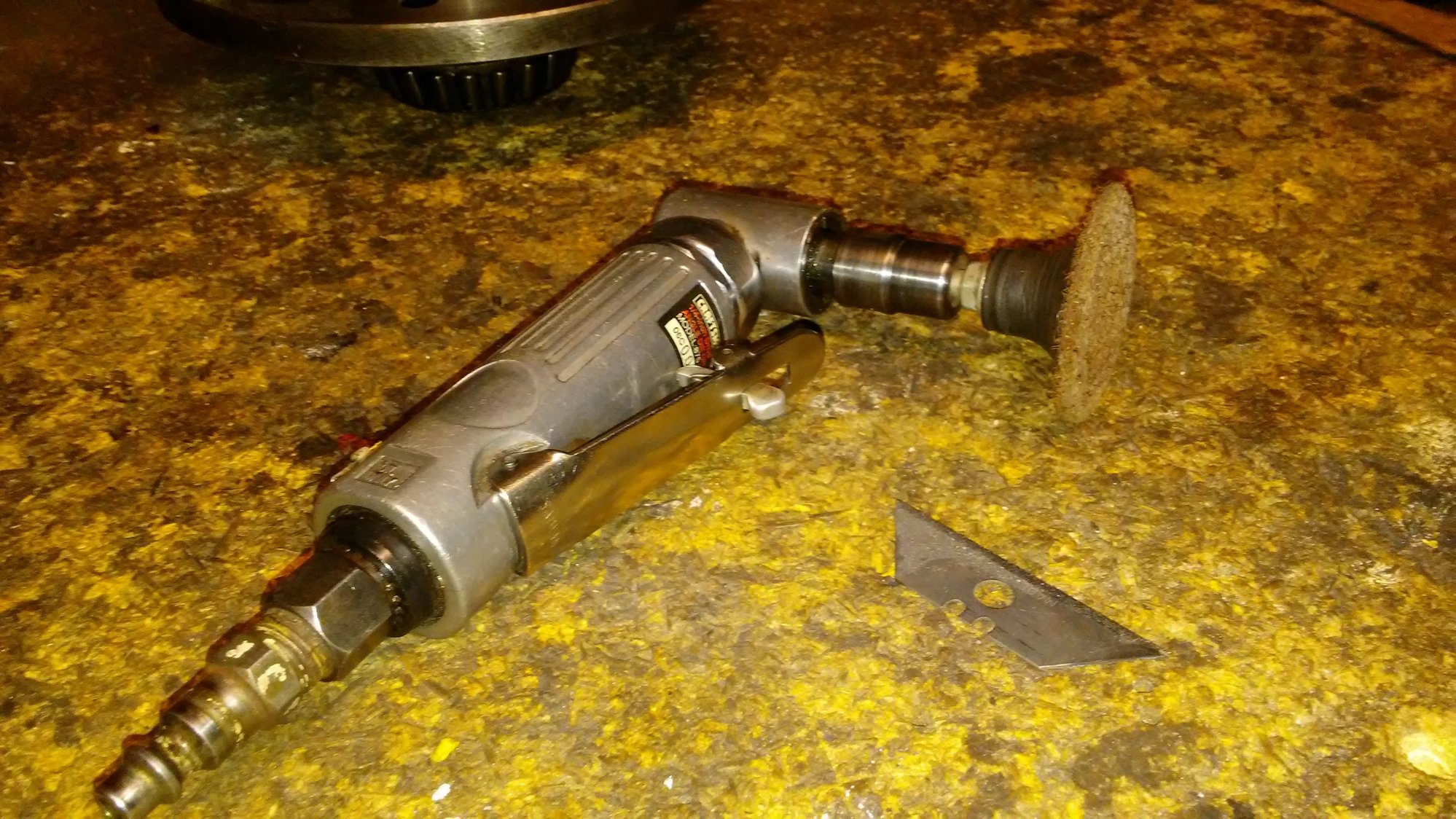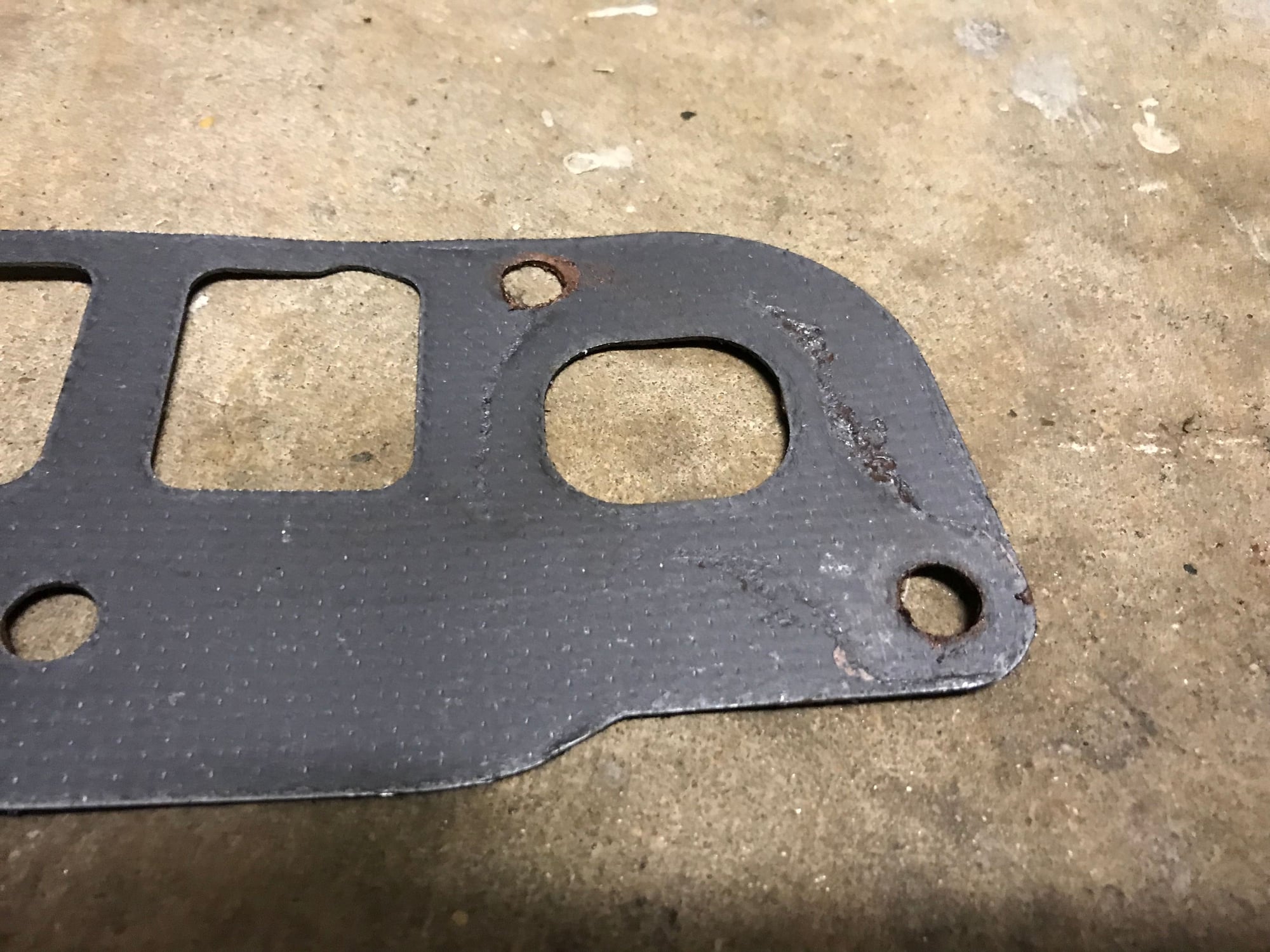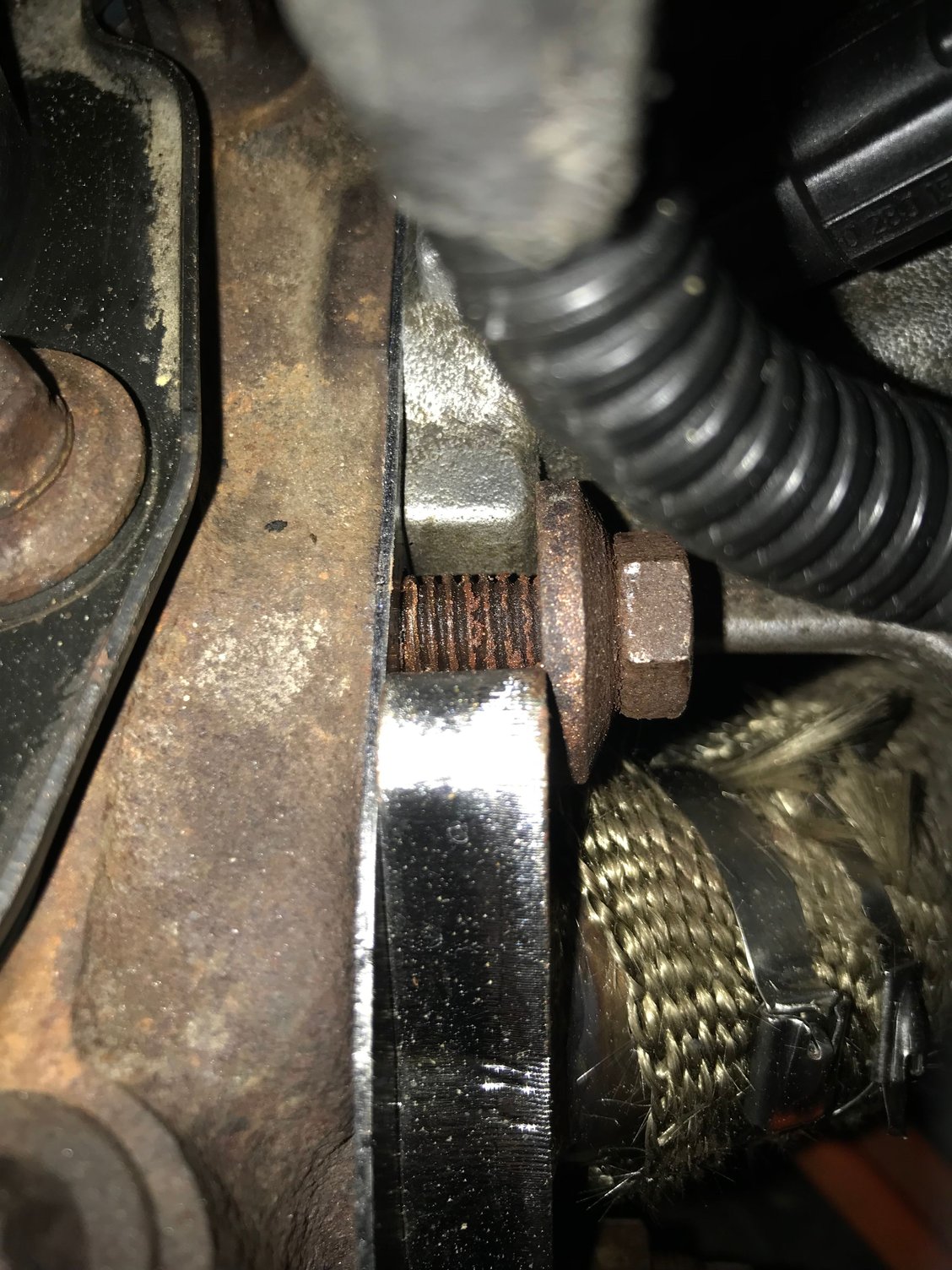all muffler and exhaust questions go here!!!!!!
#4831
Senior Member
I have seen great advice from Basslicks in the past but I must reiterate my recommendation for staying away from a wire wheel. Especially the typical steel (vs. brass) wire wheel, which is harder than the softer cast iron head. And it definitely can easily gash up an aluminum intake manifold. The wire wheel also will shed little metal wire pieces that can get where they can cause additional problems. You don't want a piece of hard steel getting between a piston ring and cylinder wall. For someone with lots of experience, possessing the right wheel and a finesse for this procedure, maybe. There is a rubber/ceramic rotary disk made by 3M (Roloc bristle disc, white) that some professionals use on aluminum heads but even then there are those that will not use it due risk to ceramic particle debris contamination. It's too risky for the average person to use a random wire wheel and end up causing regrettable damage. Don’t take the chance.
Last edited by third coast; 03-05-2018 at 12:35 AM. Reason: spelling
#4832
Banned
Join Date: May 2017
Location: Chicago(ish)
Posts: 162
Likes: 0
Received 0 Likes
on
0 Posts
Year: 2000

Something like this?
Wire wheel shrapnel is a fear of mine to.
3m gasket removal disk on a 90 degree 1/4" die grinder and a razor blade is a good solution.
#4833
CF Veteran
Join Date: Jul 2013
Posts: 1,149
Likes: 0
Received 35 Likes
on
24 Posts
Year: 2000
Model: Cherokee (XJ)
Engine: 4.0
Well team I think Ive done it. Got the header and manifold on with all the bolts that I could reach torqued appropriately. I fired it up with no pre cats, header only, and it went up to 2K RPMs and then settled down to around 1K. Ill keep yall posted about the rest of the install!
#4834
Senior Member
Well team I think Ive done it. Got the header and manifold on with all the bolts that I could reach torqued appropriately. I fired it up with no pre cats, header only, and it went up to 2K RPMs and then settled down to around 1K. Ill keep yall posted about the rest of the install!
#4835
Senior Member
Manifold Bolt Washers
Ever wonder about those odd washers used on the manifold bolts? They are not flat but somewhat cup shaped. These unique washers are used under bolt heads that secure the cast iron exhaust manifold and aluminum intake manifold to the cylinder head on the Chrysler 4.0 engine, at least on later models. They will be found bridging between both the intake and exhaust manifolds in some cases. They are technically called conical spring washers or Belleville washers.
They were most likely selected for this application primarily due to the issue of the different coefficient of expansion of aluminum compared to cast iron. The intake manifold stays relatively cool from intake air while the exhaust manifold sees high temperature exhaust gas. The manifolds and the retaining bolts see a large swing in temperature from startup in subzero ambient temperatures to exhaust manifold temperatures that likely exceed 500 deg F while running under high speed and load. The challenge is to maintain a good seal across a wide temperature swing as the different materials expand at different rates. If some “give” or room for thermal expansion is not provided the bolts can also be overstressed to the point of early failure. If load supplied by the bolts is lost gasket failure and intake and exhaust leaks will result. The cone shape of the washer provides a spring effect that helps tolerate the different temperature between intake and exhaust manifold and to deal with the challenge of thermal expansion of the different metals. This type of washer provides uniform loading where it bridges between intake and exhaust manifolds.
What does this mean to you?
1) Don’t misplace or discard the washers! They perform a critical function. They are not readily available from Chrysler or other typical sources.
2) The preload on the washer as provided by specified bolt torque is important in maintaining good sealing of the intake and exhaust manifold to the head and long life of this system.
3) When reassembling manifolds the washers should have the outer diameter setting on the manifold surfaces and not overhanging in order to properly distribute and maintain the clamping load. The high or top part of the cone goes against the bolt head.
Best of success on your manifold related projects.
Ever wonder about those odd washers used on the manifold bolts? They are not flat but somewhat cup shaped. These unique washers are used under bolt heads that secure the cast iron exhaust manifold and aluminum intake manifold to the cylinder head on the Chrysler 4.0 engine, at least on later models. They will be found bridging between both the intake and exhaust manifolds in some cases. They are technically called conical spring washers or Belleville washers.
They were most likely selected for this application primarily due to the issue of the different coefficient of expansion of aluminum compared to cast iron. The intake manifold stays relatively cool from intake air while the exhaust manifold sees high temperature exhaust gas. The manifolds and the retaining bolts see a large swing in temperature from startup in subzero ambient temperatures to exhaust manifold temperatures that likely exceed 500 deg F while running under high speed and load. The challenge is to maintain a good seal across a wide temperature swing as the different materials expand at different rates. If some “give” or room for thermal expansion is not provided the bolts can also be overstressed to the point of early failure. If load supplied by the bolts is lost gasket failure and intake and exhaust leaks will result. The cone shape of the washer provides a spring effect that helps tolerate the different temperature between intake and exhaust manifold and to deal with the challenge of thermal expansion of the different metals. This type of washer provides uniform loading where it bridges between intake and exhaust manifolds.
What does this mean to you?
1) Don’t misplace or discard the washers! They perform a critical function. They are not readily available from Chrysler or other typical sources.
2) The preload on the washer as provided by specified bolt torque is important in maintaining good sealing of the intake and exhaust manifold to the head and long life of this system.
3) When reassembling manifolds the washers should have the outer diameter setting on the manifold surfaces and not overhanging in order to properly distribute and maintain the clamping load. The high or top part of the cone goes against the bolt head.
Best of success on your manifold related projects.
#4836
CF Veteran
Join Date: Dec 2016
Location: SoCal
Posts: 3,493
Received 391 Likes
on
309 Posts
Year: 1987
Model: Cherokee (XJ)
Well team I think Ive done it. Got the header and manifold on with all the bolts that I could reach torqued appropriately. I fired it up with no pre cats, header only, and it went up to 2K RPMs and then settled down to around 1K. Ill keep yall posted about the rest of the install!
#4838
If I get an APN-style header, get the pinch de-pinched on the front pipe…
1. Do I need a high flow muffler (e.g. Flowmaster 50)
and/or
2. Do I need an aftermarket cat?
…to make the new header and pinch removal worth it?
Also, I hope this doesn't come across as loaded—it's not meant to be.
1. Do I need a high flow muffler (e.g. Flowmaster 50)
and/or
2. Do I need an aftermarket cat?
…to make the new header and pinch removal worth it?
Also, I hope this doesn't come across as loaded—it's not meant to be.
#4839
CF Veteran
Join Date: Dec 2016
Location: SoCal
Posts: 3,493
Received 391 Likes
on
309 Posts
Year: 1987
Model: Cherokee (XJ)
This picture shows that it did not clamp very good on the intake ports as there is no indent around the port. You can see the marks from the exhaust ports but the intake portion still looks smooth. Yes I know this was prior to cleaning the surface and re torquing but it shouldnt matter. If the exhaust left indents, the intake should have too. Even a slight difference in thickness wont allow enough of a "bite" on the intake ports causing a leak. Say you have 25 lbs smashing the header ports, it may only be 5 lbs on the intake which is not enough. I know how not fun it is to change the header on the 00-01 so I would really hate to see you do it all again.
Would you say the header was a 1/16" thicker? 1/8" thicker? Even more?
Would you say the header was a 1/16" thicker? 1/8" thicker? Even more?
#4840
CF Veteran
Join Date: Oct 2013
Location: Greenville, SC
Posts: 5,920
Likes: 0
Received 190 Likes
on
165 Posts
Year: 1999
Model: Cherokee(XJ)
Engine: 4.0
Originally Posted by jessenator
If I get an APN-style header, get the pinch de-pinched on the front pipe…
1. Do I need a high flow muffler (e.g. Flowmaster 50)
and/or
2. Do I need an aftermarket cat?
…to make the new header and pinch removal worth it?
Also, I hope this doesn't come across as loaded—it's not meant to be.
1. Do I need a high flow muffler (e.g. Flowmaster 50)
and/or
2. Do I need an aftermarket cat?
…to make the new header and pinch removal worth it?
Also, I hope this doesn't come across as loaded—it's not meant to be.
#4843
No, I don't lick fish.
I have seen great advice from Basslicks in the past but I must reiterate my recommendation for staying away from a wire wheel. Especially the typical steel (vs. brass) wire wheel, which is harder than the softer cast iron head. And it definitely can easily gash up an aluminum intake manifold. The wire wheel also will shed little metal wire pieces that can get where they can cause additional problems. You don't want a piece of hard steel getting between a piston ring and cylinder wall. For someone with lots of experience, possessing the right wheel and a finesse for this procedure, maybe. There is a rubber/ceramic rotary disk made by 3M (Roloc bristle disc, white) that some professionals use on aluminum heads but even then there are those that will not use it due risk to ceramic particle debris contamination. It's too risky for the average person to use a random wire wheel and end up causing regrettable damage. Don’t take the chance.
I noticed that too, but if you look at the flange closer to the center, it seems the gap isn't there. Might need to adjust torque on that particular bolt.
#4844
CF Veteran
Join Date: Jul 2013
Posts: 1,149
Likes: 0
Received 35 Likes
on
24 Posts
Year: 2000
Model: Cherokee (XJ)
Engine: 4.0
To clarify, my recommendation was NOT for use on the aluminum intake manifold, but rather ONLY for the cast iron head... and even though the bristles are made of steel, they're not hard enough to cause any damage to the cast iron of the head. Also, I would think it goes without saying to plug up the ports on the head as well as the cylinders themselves when doing ANY type of cleaning... whether using sandpaper, gasket scraper, wire wheel, or otherwise - and vacuum out the ports or cylinders after you're finished.
I noticed that too, but if you look at the flange closer to the center, it seems the gap isn't there. Might need to adjust torque on that particular bolt.
I noticed that too, but if you look at the flange closer to the center, it seems the gap isn't there. Might need to adjust torque on that particular bolt.
 I went back and checked. Now tell me about any gaskets that go between the header and the down pipe/pre cats
I went back and checked. Now tell me about any gaskets that go between the header and the down pipe/pre cats
#4845
CF Veteran
Join Date: Jul 2013
Posts: 1,149
Likes: 0
Received 35 Likes
on
24 Posts
Year: 2000
Model: Cherokee (XJ)
Engine: 4.0
https://www.youtube.com/watch?v=XnKV...ature=youtu.be
This is where im at so far. Got some exhaust flange gaskets ordered for between the headers and pre cats because it sounds like a tractor at the moment lmao
This is where im at so far. Got some exhaust flange gaskets ordered for between the headers and pre cats because it sounds like a tractor at the moment lmao




